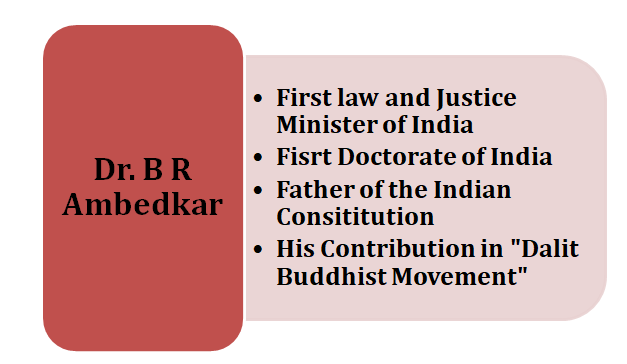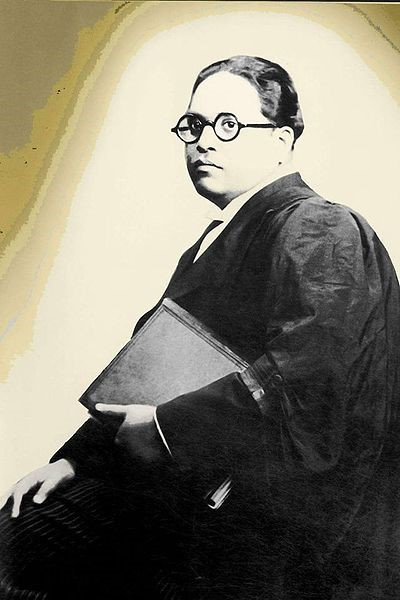

Ambedkar was considered one of the true freedom fighters that India deserved. He was not one of them who just dreamt about the freedom of India and setting it free from British rule, but he had the view of transforming the country into true meaning so that everyone can feel freedom. He made his contribution to the uplifting of the life of Dalits.

Facts about Ambedkar
Dr. Ambedkar was one of the first architects who contributed to shaping the Indian Constitution. He serves the country as a minister of Law and justice in the cabinet led by Jawaharlal Nehru. His contributions toward the betterment of Dalits plays a significant role in the change of their initial state. He also played an inspiring role in The Dalit Buddhist Movement. The birthday of Ambedkar is observed as Ambedkar Jayanti in this country.
In the year 1891, Ambedkar was born on the 14th of April. He took birth in Mhow a military cantonment, which is currently In Madhya Pradesh. Later, his birthplace, Mhow was named after him and called Dr Ambedkar Nagar.

Dr. B R Ambedkar
Unknown authorUnknown author, CC0, via Wikimedia Commons
He was born in a Marathi family but Mahar caste where his father Ramji Maloji Sakpal, was an army officer and his mother was Bhimabai Sakpal.
In 1906, he took admitted to Elphinstone High School, as the only untouchable for his postsecondary education. He passed his matric exam and entered the University of Bombay. He was one of the first among his caste who had achieved this. He took his degree in political science and economics from the university. At Columbia University, he completed his postgraduation education. Later, he had done his Ph.D at the same university.
One of the major difficulties faced by Ambedkar was caste discrimination. Being a student from the Dalit caste, he had always faced problems in school, as because at that time Dalits were considered untouchables at that time. His teachers made separate seating arrangements for him, so he did not get mixed with the students of upper caste. The situation does not change too much after school. He also faced the same kind of discrimination afterwards.
The time when he came back from abroad after completing his higher education he started working under the King of Baroda as he appointed him as the defense secretary. The position was high but still, the shadow of caste discrimination somehow followed him to even that position. Those officials that belonged to the upper class considered him as he was considered untouchable.
After facing years of caste-related discrimination, Ambedkar changed his religion from Hinduism to Buddhism. His belief about religion was that it should not be about division, and that is where he thought his ideology was different from what Hinduism was offering (Mukerji, 2020). He considered Buddhism ideal because of its ideology.
His conversion to Buddhism leads to the movement of Dalit Buddhists and it results in a mass conversion. In the year 1927, he decided to take a strong part and launch the active movement against untouchability. He leads the public movement to open drinking water resources for everyone.
One satyagraha was led by him in Mahad for the right of his community. He played a significant role in entering the Dalits into the Hindu Temples. He was also the leader of the Kalaram Temple movement.
Ambedkar took an interesting part in the process of Independence. He gets involved in the campaigning and negotiation part for independence. After Independence when Jawaharlal Nehru made the first cabinet, Ambedkar was the first minister of Law and Justice. Not only that, but he was also the first chairman of the Drafting committee, which was made for the Indian Constitution.
Among many, he was one of the architects who made the shape of the constitution. That is the reason he is known as the father of the Indian Constitution. Later, because of his ideological differences with Hinduism, when he get converted to Buddhism, he took a major role in the Dalit Buddhist Movement which results in a mass conversion of the Dalits.
Ambedkar was the first person among the Dalit community and all Indians to hold a doctorate in economics. He was the key figure in the constituent assembly and made his contribution to making the Indian Constitution. That is the reason he was known as the Father of the Constitution. He was also the first law and justice minister of India's first cabinet made by Nehru. After suffering years from high blood sugar, he died on 6decemberr of 1956, in Delhi.
Q.1. Why Ambedkar was famous?
Ans. Dr. Ambedkar was famous for his contribution to the Indian constitution. He was one of the people who provided the basic shape of the constitution. He was also popular because of his political contribution and stand against untouchability.
Q.2. Who had handwritten the constitution of India?
Ans. The Constitution of India was hand-written by Calligrapher Prem Behari Narain Raizada. He followed the flowing italic style for writing down the constitution.
Q.3. What was the reason behind changing the name of Ambedkar?
Ans. The original name of Ambedkar was Sakpal, as because he belongs to the village named Ambadawe, his father changed his name to Ambadawekar. Later in school one of his teachers changed his name in the school records and made it Ambedkar.
Q.4. Why was Ambedkar decided to change his religion?
Ans. Dr. Ambedkar decided of changing his religion to break the caste system. He believed in a religion that will not divide the people, however, he found his ideology differs from Hinduism, and because of that, he decided to change his religion to Buddhism.